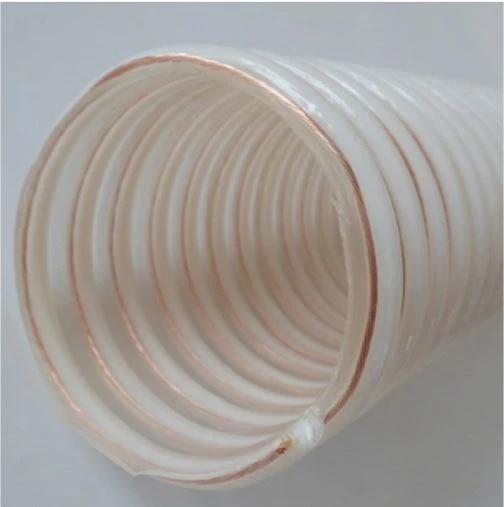Choosing the Right Vacuum Pump Hose for Optimal Performance and Efficiency
Understanding Vacuum Pump Hoses Essential Components for Efficiency
In various industrial and scientific applications, the vacuum pump hose serves as a critical component that facilitates the effective operation of vacuum systems. A vacuum pump operates by removing air or other gases from a sealed chamber, creating a vacuum that is essential for processes such as filtration, drying, and material handling. The hose used in these systems must be specifically designed to maintain the integrity of the vacuum environment and withstand the demands of the application.
What Is a Vacuum Pump Hose?
A vacuum pump hose is a flexible tubing that connects the vacuum pump to the process or equipment requiring a vacuum. These hoses are engineered to transport gases, create suction, and handle varying levels of pressure while ensuring minimal leakage. The design, material, and dimensions of the hose are crucial for optimal performance, influencing factors such as flow rates, temperature resistance, and chemical compatibility.
Types of Vacuum Pump Hoses
Vacuum pump hoses come in a variety of types, each suited for specific applications
1. Rubber Vacuum Hoses These are commonly used due to their flexibility and resilience. They can handle moderate vacuum levels and are often used in automotive applications or light industrial settings.
2. PVC Vacuum Hoses Available in various grades, PVC hoses are lightweight, resistant to abrasion, and suitable for low to medium vacuum levels. They are often used in laboratory applications for transferring gases.
3. Silicone Vacuum Hoses Known for their temperature resistance, silicone hoses are appropriate for high-temperature applications. They are often utilized in medical and food-related processes.
4. Metal Vacuum Hoses For extreme conditions, metal hoses provide the highest level of durability. They can withstand high vacuum levels and harsh chemicals, making them ideal for industrial applications involving corrosive substances.
5. Composite Hoses These hoses combine different materials to leverage the benefits of each. They are often designed for specific applications, providing excellent flexibility, strength, and resistance to various temperatures and chemicals.
Key Considerations When Selecting a Vacuum Pump Hose
Selecting the right vacuum pump hose is critical to ensure efficiency, durability, and safety. Here are some key factors to consider
vacuum pump hose

- Vacuum Level The hose must be rated for the vacuum level present in the application. Higher vacuum levels require more robust hoses capable of withstanding the pressure differential.
- Material Compatibility The material of the hose must be compatible with the substances it will come into contact with, whether they are gases, vapors, or liquids. This prevents degradation of the hose and potential contamination.
- Temperature Resistance The operational temperature range should be considered. Hoses must maintain their integrity and performance within the temperature limits dictated by the application.
- Diameter and Length The diameter of the hose significantly affects flow rate, while the length can impact suction efficiency. It is essential to match the specifications to the needs of the system.
- Flexibility and Bend Radius A hose’s flexibility and minimum bend radius are important, especially in setups with limited space. Rigid hoses may not fit in tight configurations, which can lead to kinks and pressure loss.
Maintenance and Best Practices
To ensure longevity and optimal performance, regular maintenance of vacuum pump hoses is crucial. Here are some best practices
- Regular Inspections Periodically check the hoses for signs of wear, such as cracks, abrasions, or discoloration. Early detection of damage can prevent system failures.
- Proper Storage Store hoses in a cool, dry place away from direct sunlight. Avoid kinking or bending the hoses excessively, as this can compromise their integrity.
- Cleaning Depending on the application, the inside of the hoses may require cleaning to prevent contamination. Ensure that the cleaning agents used are compatible with the hose material.
- Replace When Necessary If a hose shows significant wear or damage, it should be replaced immediately to maintain system efficiency and safety.
Conclusion
The vacuum pump hose is an often-overlooked component in vacuum systems, yet its significance cannot be understated. By understanding the various types, selection criteria, and maintenance practices, users can ensure that their vacuum systems operate efficiently and effectively. Investing in the right hose not only enhances performance but also extends the lifespan of the entire vacuum system, making it a vital element for those working in environments that depend on precise vacuum control.
-
Top Quality Oxy Acetylene Hoses for Sale Fit for Welding DemandsNewsJul.28,2025
-
The Future of Pneumatic Air Tubes in IndustryNewsJul.28,2025
-
Superior and Reliable LPG Hose Pipe Solutions for Every NeedNewsJul.28,2025
-
Exceptionally Durable and Versatile Premium Braided PVC TubingNewsJul.28,2025
-
Best Adapters for Connecting Garden Hose to PVC Pipe ConnectionsNewsJul.28,2025
-
The Essential Role of LPG Hoses in Safe and Efficient Gas DistributionNewsJul.16,2025














